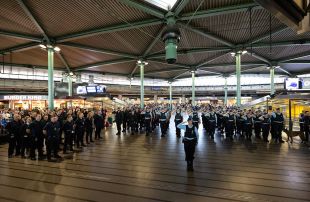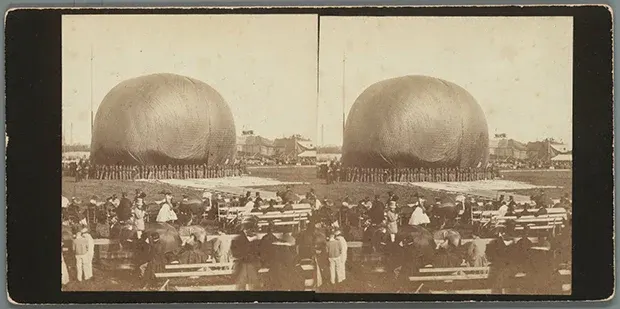What's in a name? All about our street names
Streets, roads, and squares: even at Schiphol they must have name. After all, how else would you find your way? Some a wide boulevard, others a bit tucked away behind a row of offices, but often with a special story. A story we are proud of.
Jan Dellaert(square)
If anyone deserves the honour of being immortalised with his own square, it’s our founding father Jan Dellaert. Born in the province of Zeeland and after a short career as an aviator with the Luchtvaart Afdeeling (LVA) in Soesterberg, he became Schiphol’s very first station master in 1920. At the time, this consisted of little more than a meadow with a few wooden shacks.
But aviation pioneer and visionary Dellaert foresees a great future. Under his leadership, Schiphol grows into a significant international player. And when the limits of the old site are reached, the ‘father of Schiphol’ is the driving force behind the creation of the modern Schiphol-Centrum.
Evert van de Beek(street)
Whereas Jan Dellaert is fairly known to many, that is less true of Evert van de Beek. He too took his first steps in the aviation world with the LVA, albeit not as an aviator but as a civil servant. After a short tenure at Fokker, he went to work as deputy director at Schiphol in 1926, under Dellaert.
Van de Beek is particularly valuable in the period after World War II, when the almost completely destroyed airport had to be rebuilt. He is also the driving force behind the construction of a number of farms on the airport site. This way, in the early 1960s, Schiphol gives something back to farmers who have to make room for the construction of new runways. One of the farms was even named Farmstead Evert van de Beek, who himself had the honour of opening ‘his’ farmstead.
Rinse Hofstra(road)
Like Dellaert and Van de Beek, Rinse Hofstra also began his career with the LVA. In early 1921, the soldier was lent to the newly founded KLM to make some test flights there. The cooperation was satisfactory and in April of the same year, together with Gerrit J. Geysendorffer, he joined the young airline as the first civilian Dutch pilot ever.
The story goes that Hofstra invented the ‘autopilot’ by tying the control stick to the windscreen wiper with a rubber band. Unfortunately, Hofstra had to give up the cockpit for good as early as 1924 due to night blindness. Dellaert gets him to Schiphol a few years later, where he is employed for the rest of his working life as chief officer and chief inspector.
Ballon Nadar(street)
That Ballon Nader Street is named after Ballon Nader farmhouse is not so spectacular in itself. But the story behind the farm’s name is. In September 1865, the famous French photographer-inventor and also balloonist Nadar, a pseudonym for Gaspar-Félix Tournachon, came to Amsterdam for a demonstration flight with his giant hot-air balloon ‘Le Géant’. His arrival brings tens of thousands of interested people to their feet.
His first attempt was called off due to bad weather but a few days later he took to the air after all, albeit for a short time. He did not get further than the land of farmer Blokland in the Haarlemmermeerpolder. He was so impressed by the special visit that literally fell from the sky that he named his farm after it.
Jan Plezier(road)
A bit of a special case, this Jan Plezier. You see, he never actually worked at Schiphol. In fact, he didn’t even exist. You see, Jan Plezierweg is named after an open carriage for tourist trips that used to be widely used, according to historian and publicist Jan Willem de Wijn. This vehicle was also called Jan Plezier (Jan= a common Dutch first name for men, Plezier = fun). The Jan Plezierweg is now located where there used to be a bus station where buses meant for group transport of day-trippers parked while waiting for their passengers.
This blog is the first part in a series about street names at Schiphol. Curious about part 2? You can find it here.
Read the previous blogs
-
Plant-based bonanza at Plaza
Published on:With more and more meat-free meals and snacks at various places at Schiphol, vegetarians are well catered for. You can enjoy a plant-based bonanza at Plaza!

-
A day in the life of... a project controller
Published on:We asked project controller Isho Toma about his position within the Finance & Control department at Schiphol and discovered that it’s a multifaceted role.

-
Ook Schiphol herdenkt met twee minuten stilte
Published on:Eens per jaar is het 2 minuten stil op Schiphol. Want ook hier herdenken we de Nederlandse slachtoffers van de Tweede Wereldoorlog en latere oorlogssituaties.




